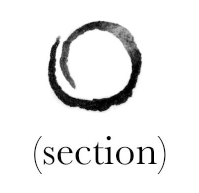From Hubert Airy 20 July 1872
13. Eliot Place. Blackheath S.E.
1872. July 20.
My dear Sir
I thank you much for your letter received last night, reminding me of the distinction between the spiral and the whorled arrangements in respect of the number of leaves that spring from a node.1 I must confess that I am not familiar with the writings of physiologists on that point, and do not know what are the arguments for assigning any independent importance to the node, which I take to exist only through and in dependence upon, the leaf which it carries.— Let me adopt your words, that “the presence of a leaf causes the node,” and “the proposition is little more than a truism,” as exactly expressing my ideas on the subject. In the whorled arrangement it often happens that there is a separation (in height) between different leaves belonging to the same whorl, and each leaf carries with it its own share of ‘node’: and it would be easy to collect a series of specimens in gradation from the whorled to the alternate arrangement, in which it would be impossible to say where the ‘node’ lost the whorled character and acquired the alternate.
A similar, but inverse, series might be collected of specimens in which the normal arrangement is alternate, but which present occasional approximations to the whorled feature, with the same impossibility of assigning any value to the ‘node’ except as the starting-point of a leaf, subject therefore to any disarrangement that takes place among the leaves.
I suppose the most distinct development of the ‘node’ is found in canes; but is it not a fact that in canes (as in our common English reeds and grasses) the origin of the leaf completely embraces the stem and overlaps itself, thus:—
 and therefore calls for nodal development all round?
and therefore calls for nodal development all round?
It is true, the highest nodes in grass-stems (wheat &c.) have retained their development, though the leaves at those points have become obsolete:2 but does not this appear to be a special modification? (—for strength?)
With great respect, I remain, | my dear sir, yours very truly, Hubert Airy
Footnotes
Summary
Discusses the significance of the node. Believes, with CD, that it has no independent importance but is merely the consequence of the presence of a leaf. Does not believe a distinction can be made between whorled and alternate leaf arrangements on the basis of the number of leaves springing from a node. The node, as the starting point of a leaf, is subject to any disarrangement which takes place among the leaves.
Letter details
- Letter no.
- DCP-LETT-8418
- From
- Hubert Airy
- To
- Charles Robert Darwin
- Sent from
- Blackheath
- Source of text
- DAR 159: 18
- Physical description
- ALS 4pp
Please cite as
Darwin Correspondence Project, “Letter no. 8418,” accessed on 16 April 2024, https://www.darwinproject.ac.uk/letter/?docId=letters/DCP-LETT-8418.xml
Also published in The Correspondence of Charles Darwin, vol. 20


